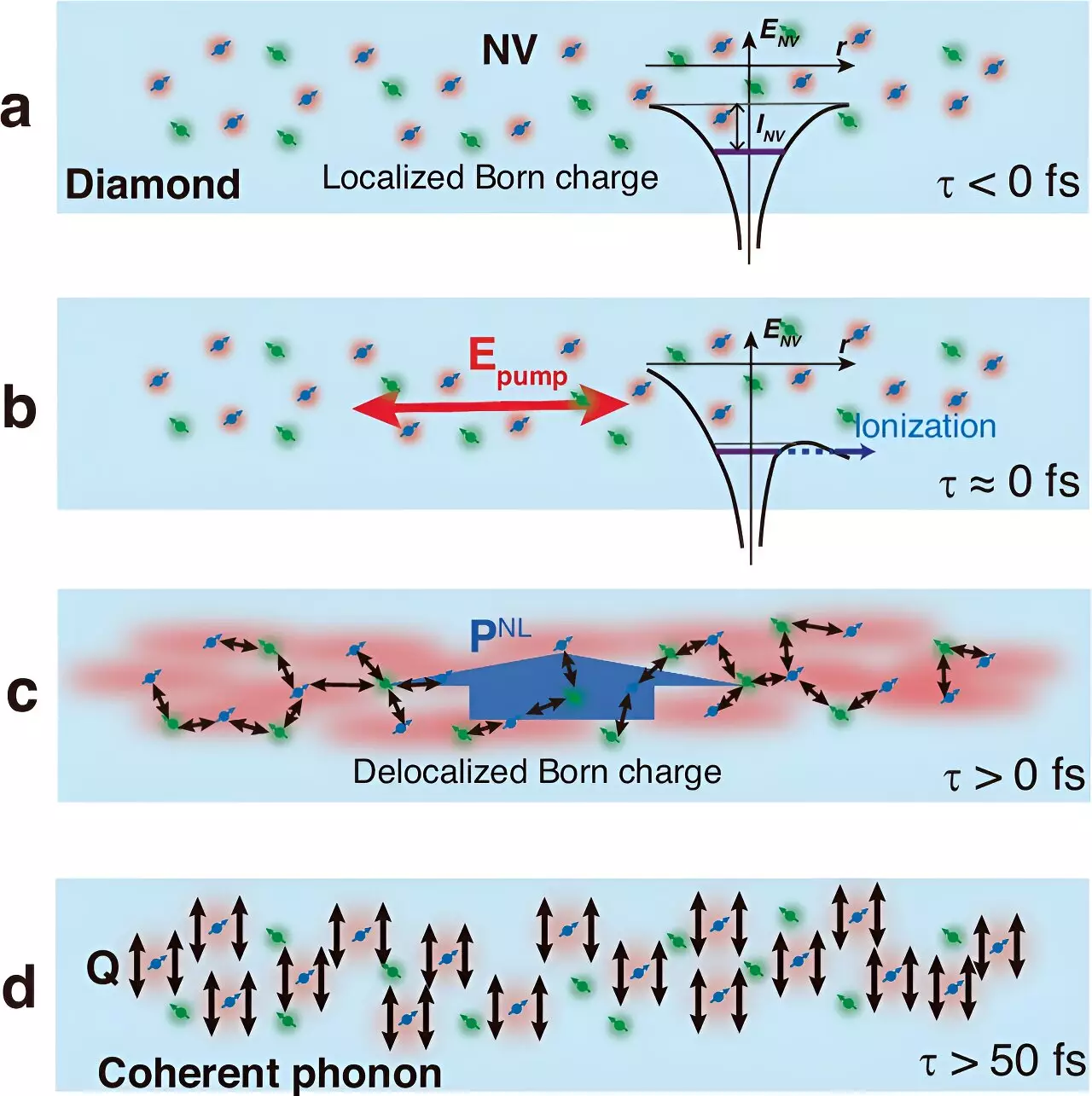The study of diamond crystals has recently taken a leap forward, thanks to groundbreaking research conducted by a team at the University of Tsukuba. Their work focuses on understanding the fascinating cooperative behaviors of polaron quasiparticles—excitations formed through the interplay of electrons with lattice vibrations, particularly around specific defect structures known as color centers. This discovery promises revolutionary advancements in quantum sensing technologies, as published in the esteemed journal, Nature Communications.
The Role of Nitrogen-Vacancy Centers
Central to this investigation is the nitrogen-vacancy (N-V) center, a crucial element formed when nitrogen atoms replace a carbon atom in the diamond lattice, resulting in a vacancy. This unique defect not only imparts distinctive color properties to diamonds but also serves as a potent sensor, capable of detecting subtle environmental changes, such as magnetic fields and temperature variations. The N-V center’s adaptability is largely attributed to its quantum states, which respond dynamically to external stimuli, opening the door to innovative sensor applications.
Despite recognizing the significance of N-V centers, the research community grappled with the complexities surrounding the electron-phonon interactions that occur during lattice deformations. Previous knowledge lacked clarity on how these interactions gave rise to polarons—quasiparticles formed from a free carrier and its surrounding phonon cloud. To address these gaps, the researchers employed advanced techniques involving ultrashort laser pulses, which allowed them to study the reflectance changes within high-purity diamond crystals embedded with nanosheets rich in NV centers.
The experiments revealed an astonishing amplification of lattice vibrations—approximately 13 times greater than what was initially anticipated. This unexpected result puzzled scientists, as the N-V centers had a relatively low density compared to other defects, raising questions about the nature of their influence on the lattice. The importance of these findings lies in the fact that they unveil the previously unrecognized existence of Fröhlich polarons in diamond structures, challenging longstanding assumptions about electron-phonon dynamics in these materials.
Implications for Future Quantum Technologies
The insights gained from this study hold transformative potential for the field of quantum sensing. By leveraging the unique properties of polarons generated by N-V centers, researchers may be able to develop highly sensitive sensors capable of detecting minute changes in their environment. The ability to manipulate and understand these quasiparticles will not only enhance the utility of diamond-based sensors but may also propel innovations in quantum computing and information storage technologies.
The discoveries regarding polarons in diamonds define a new frontier in material science and quantum technology. As this research solidifies our understanding of the interactions between electrons and lattice vibrations, it paves the way for new applications that harness the unique properties of N-V centers. The collaborative efforts of the University of Tsukuba’s research team linger as a beacon for future exploration in quantum mechanics, stimulating universal curiosity about the intricate relationships hiding within the structure of one of Earth’s hardest materials.


Leave a Reply